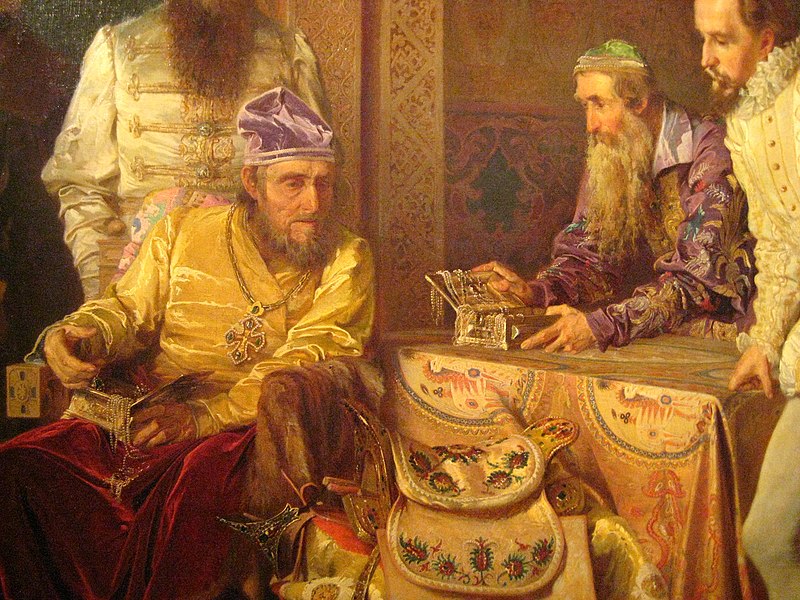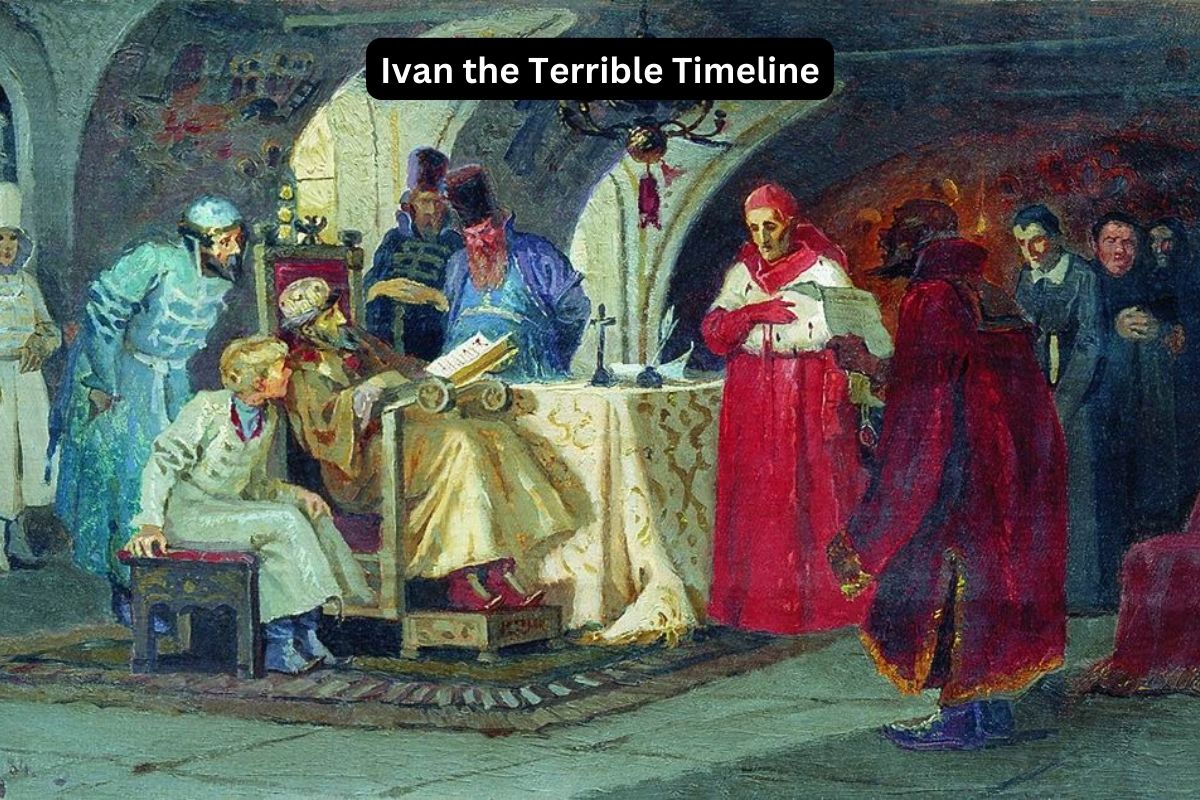Ivan IV, better known as Ivan the Terrible, remains one of the most enigmatic and controversial figures in Russian history. Born in 1530, Ivan ascended to the throne as Grand Prince of Moscow at the tender age of three, inheriting a realm rife with internal strife and external threats.
As he matured, Ivan’s reign evolved from a promising era of conquest and centralization to a period marked by ruthless repression and violence.
This article delves into the complex legacy of Ivan the Terrible, exploring his achievements, such as the expansion of Russian territory, as well as his darker deeds, including the establishment of the Oprichnina and the murder of his own son.
Through a nuanced examination of Ivan’s reign, we aim to shed light on the complexities of power and tyranny in one of Russia’s most tumultuous periods.
| Year | Event |
|---|---|
| 1530 | Ivan IV (Ivan the Terrible) is born in Moscow, Russia. |
| 1533 | Ivan becomes Grand Prince of Moscow at age three, following the death of his father, Vasily III. |
| 1547 | Ivan is crowned as the first Tsar of Russia at the age of 16. |
| 1552 | Ivan conquers the Khanate of Kazan, expanding Russian territory eastward. |
| 1556-1557 | Ivan institutes the Oprichnina, a period of intense repression and terror. |
| 1560s | Ivan’s reign sees further military conquests and expansion into Siberia. |
| 1564-1572 | Ivan briefly abdicates the throne, leading to a period of chaos known as the “Time of Troubles.” |
| 1581 | Ivan kills his son and heir, Ivan Ivanovich, in a fit of rage during an argument. |
| 1584 | Ivan IV dies of a stroke while playing chess. His son, Feodor I, succeeds him as Tsar. |
Timeline of Ivan the Terrible
1530: Ivan IV (Ivan the Terrible) is born in Moscow, Russia
Ivan IV, also known as Ivan the Terrible, is born in Moscow, Russia, to Grand Prince Vasily III and his second wife, Elena Glinskaya.
Also Read: Facts About Ivan the Terrible
His birth occurs during a tumultuous period in Russian history marked by internal strife and external threats, including invasions from the Mongols and conflicts between rival noble families. Ivan’s early years are overshadowed by the struggle for power among the Russian nobility.

1533: Ivan becomes Grand Prince of Moscow at age three, following the death of his father, Vasily III
Following the death of his father, Grand Prince Vasily III, three-year-old Ivan ascends to the throne as Grand Prince of Moscow. Due to his young age, a regency council is established to rule on his behalf.
Also Read: Accomplishments of Ivan the Terrible
This period of regency is characterized by political maneuvering and power struggles among the boyars (nobility) vying for influence over the young prince and control of the Russian state.
1547: Ivan is crowned as the first Tsar of Russia at the age of 16
Ivan is crowned as the first Tsar of Russia at the age of 16, marking the formal establishment of the Tsardom of Russia. His coronation represents a significant shift in Russian governance, consolidating power under the monarchy and further centralizing authority.
Ivan’s reign as Tsar begins with high hopes for stability and prosperity, but it will eventually be marred by periods of internal turmoil, political repression, and brutal repression of dissent.
1552: Ivan conquers the Khanate of Kazan, expanding Russian territory eastward
In 1552, Ivan IV achieves a significant military victory by conquering the Khanate of Kazan. This conquest marks a crucial expansion of Russian territory eastward and grants access to the lucrative trade routes along the Volga River.
The capture of Kazan also serves to consolidate Ivan’s power domestically, enhancing his prestige as a ruler and solidifying his position as the dominant force in Russian politics.
1556-1557: Ivan institutes the Oprichnina, a period of intense repression and terror
Following the conquest of Kazan, Ivan IV institutes a period of intense political repression known as the Oprichnina. During this time, Ivan establishes a parallel government and personal army, known as the Oprichniki, to enforce his authority and suppress dissent.
The Oprichnina is characterized by widespread terror, purges, and executions as Ivan ruthlessly eliminates perceived threats to his rule. This period of state-sponsored terror contributes to Ivan’s epithet as “the Terrible” and leaves a lasting legacy of fear and trauma in Russian society.

1560s: Ivan’s reign sees further military conquests and expansion into Siberia
Throughout the 1560s, Ivan IV’s reign is marked by further military conquests and territorial expansion. In addition to the conquest of Kazan, Ivan oversees the annexation of the Astrakhan Khanate in 1556 and expands Russian influence into Siberia.
These military campaigns strengthen Russia’s position as a regional power and contribute to the growth of the Russian Empire. However, Ivan’s expansionist policies also lead to increased tensions with neighboring states and internal challenges as the costs of maintaining territorial control escalate.
Despite these challenges, Ivan’s military campaigns during the 1560s significantly shape the trajectory of Russian history and establish him as one of the most formidable rulers of his time.
1564-1572: Ivan briefly abdicates the throne, leading to a period of chaos known as the “Time of Troubles”
In 1564, Ivan IV unexpectedly abdicates the throne, leaving Russia in a state of political turmoil known as the “Time of Troubles.” Ivan’s decision to relinquish power is triggered by a combination of personal grief and frustration with the challenges of governing.
The death of his beloved wife, Anastasia Romanovna, in 1560 deeply affects Ivan, plunging him into a state of despair and leading to bouts of erratic behavior.
Additionally, Ivan becomes disillusioned with the political infighting and corruption within his court, which undermines his efforts to enact reforms and maintain stability.
1581: Ivan kills his son and heir, Ivan Ivanovich, in a fit of rage during an argument
One of the most notorious incidents of Ivan IV’s reign occurs in 1581 when he kills his own son and heir, Ivan Ivanovich, during a violent altercation. The exact circumstances surrounding Ivan Ivanovich’s death remain shrouded in mystery and speculation, but it is believed to have stemmed from a heated argument between father and son.
Ivan’s act of patricide shocks Russian society and further tarnishes his reputation as a ruler. The death of Ivan Ivanovich leaves Ivan IV without a clear successor, contributing to the instability and uncertainty that characterize the latter years of his reign.

1584: Ivan IV dies of a stroke while playing chess. His son, Feodor I, succeeds him as Tsar
Ivan IV dies of a stroke while engaged in a game of chess. His death marks the end of an era in Russian history and the conclusion of a tumultuous reign characterized by both significant achievements and brutal repression.
Despite his legacy as a transformative figure who expanded Russian territory and centralized power, Ivan’s reign is also remembered for its cruelty, tyranny, and the lasting scars it inflicted on Russian society. Following Ivan’s death, his son, Feodor I, ascends to the throne, inheriting the formidable challenges of governing a fractured and traumatized nation.
